Paint for the ceiling in the bathroom. How to paint the ceiling?

Before we begin to deal with the main topic of this article, we would like to answer a question that very often worries those who are going to paint the ceiling in the bathroom. So which is better: painting ceilings or a stretch ceiling?
Painting by hand or a stretch ceiling?
Any professional will tell you that the most optimal option is exactly the coating of the surface with paint.
The main advantage of a painted ceiling is that the ceiling "breathes". In addition, this option is the most environmentally friendly painting. But then why do many people continue to choose a suspended ceiling? The fact is that some people consider this option more beautiful, while others just do not know how to paint properly.
If you want to consider other types of ceiling finishing, we advise you to read our article on Choosing a ceiling in the bathroom..
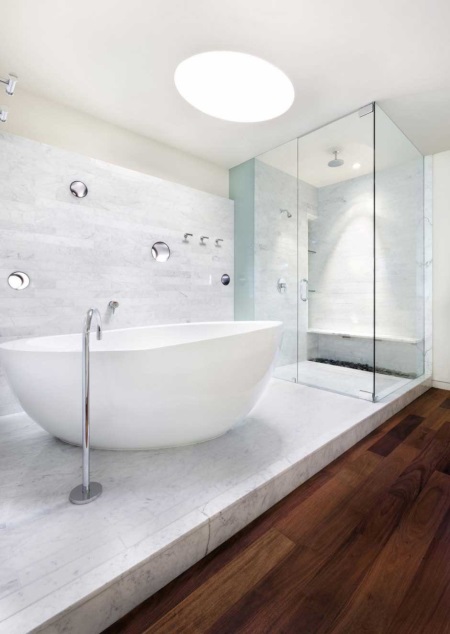
Types of paints, their advantages and disadvantages
In order to qualitatively paint the ceiling, you must first choose a paint, which comes in four varieties:
- Water emulsion;
- Acrylic;
- Silicone;
- Silicate.
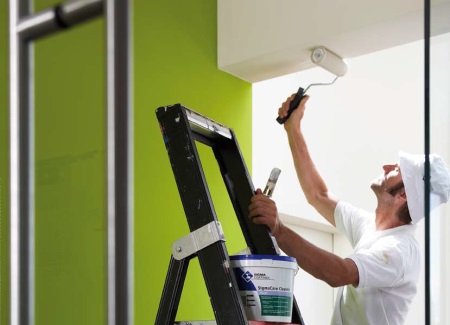
Let's start with water-based paint.. Immediately note that it has excellent features and its distinctive feature is the ability to create the effect of "white ceiling". The main advantages of such paint can be attributed moisture resistance, environmental friendliness and a wide range of colors. The only drawback is that it is easily washed off by water.
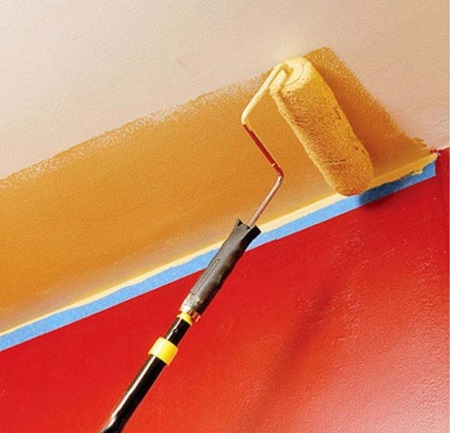
Acrylic paint today enjoys the greatest popularity among other options, as it is very easy to apply. Among the advantages are a large range of shades, the inability to absorb moisture and resistance to mold formation. A ceiling painted with acrylic is very easy to brush off dirt. In addition, this type of paint can smooth out irregularities.
As for silicone paintIt has excellent performance characteristics. The main properties of silicone are high vapor permeability, resistance to moisture and excellent tolerance of temperature differences. Such paint can be easily applied to any surface and is capable of bridging cracks.
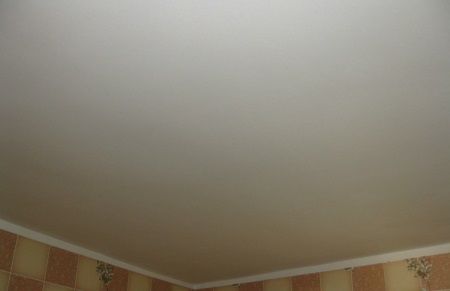
Silicate paint More often used for whitewashed ceilings. Among the advantages are high resistance to the formation of harmful fungus and the ability to perfectly close cracks. Before applying silicate paint, the ceiling should be treated with a silicate primer.
Choosing a color scheme
As for the choice of color, this decision depends entirely on the preferences of the owners of the bathroom. Some lovers of the exotic stop at the red or purple paint. But experts recommend choosing light colors, as they will affect the mood of the owner for the better. Note that it is not necessary to make the ceiling white - here you can use blue, turquoise, beige and even a light shade of green. Of course, the color of the coating must successfully combine with the overall tone of the tiles and the floor.

Recall that you do not need to try to tint the paint yourself, and it is better to order the production of the necessary shade from a specialist. Such a decision will allow you to buy the right can of paint in case of need.
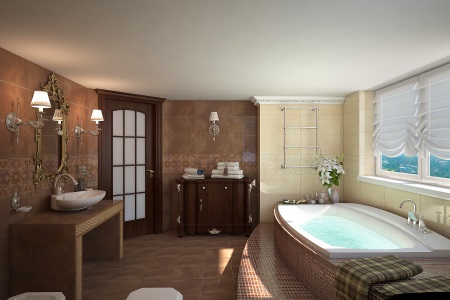
Features of tinting
Each of us understands that monotonous tones are boring - it is necessary to diversify them, which in turn will ensure a good mood.
Recommendations for tinting:
- You can tint the paint yourself or in the store. Note that a really serious company uses a special tinting fan, which consists of 2000 different colors and shades. Of course, a first look at the color fan is not enough to make a choice. To do this, you need to choose a few options and paint a small area of the coating, then choose the desired color and purchase the necessary amount of paint.
- If you decide to tint it yourself, it is better to use a tinting paste. The amount of tinting should not exceed 10% of the total mass of the paint. When choosing a white color you should remember that in this case the tinting can be used only for obtaining a pastel tone. Each quality paint is labeled A, B or C. If you want to get a saturated color, you should choose option C.
- The final color can be seen only after drying. That's why we advised to test the paint first. Alkyd paints are darker after drying, and "chemical" paints are more sensitive to tint. Latex paint may behave differently.
- It is best to stir the paint with a special drill, It is better to mix the paint with a special drill, popularly called a mixer.
- It is better to calculate in advance the amount of paint required for tinting. This is done to get the same tone.
Matte or glossy: which to choose?
As it turns out, it is not only the color that matters, but also the "evenness" of the surface that will be obtained after the application of paint. Glossy paints reflect color well.that visually makes the room more spacious.
Matt paints perfectly hide defects on the ceiling, which is their main advantage.That is their main advantage. Also note that the ceiling painted with glossy paint, better cleaned. Hence the conclusion that if the surface of the ceiling is slightly "bumpy" or with small cracks, it is better to give preference to the matte version.
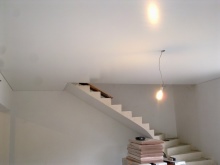
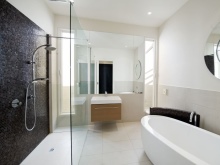
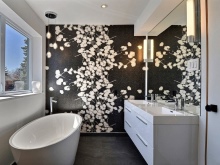
How to choose
A cheap option may not always be acceptable. In the process of painting the ceiling is still worth paying attention to the quality of the paint. Here it should be noted that a good water-emulsion variant will cost relatively expensive. But you do not need to save money, because it will not be profitable in the long run.
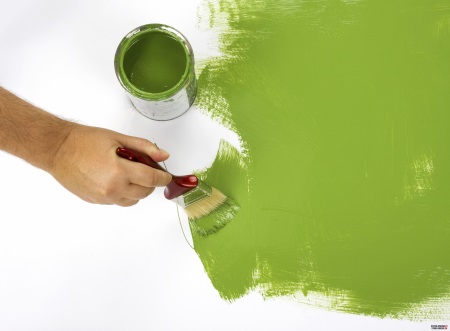
Low-quality coating will not last long, and the consumption of "cheap" will be more. Therefore, buy only in officially registered stores, to exclude the option of acquiring a fake.
Producers
A few words should be said about the choice of paint manufacturer. Here you need to remember that you should buy the coating only from those dealers that have been successfully leading the market for at least 10 years. Perhaps the cost of their products will be slightly overpriced, but the quality of the goods will be the highest. In fact, making paint does not require sophisticated equipment. In any case, before choosing one or another option, you should pay attention to the reviews about the manufacturer.
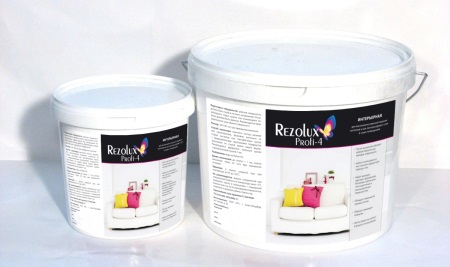
Preparatory work on the ceiling surface
Before you start painting, it is necessary to carry out preparatory work. First, you should make sure that the surface to be painted is absolutely flat. Recall that above we wrote about some types of paint that hide barely noticeable irregularities, but this does not mean that the ceiling can be left in its "pristine" form.
Leveling can be done with plaster and drywall. Let's consider the methods in more detail:
- The use of plaster Is one of the most popular methods. This material is sold in dry form and to prepare it, you just need to follow the instructions in the manual. As one commercial said, just add water.
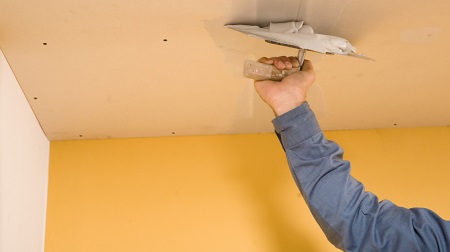
- The use of drywall is a more practical method, and it allows you to level the surface with your hands. It is enough to simply mount the gypsum board on a framework of metal and putty the joints of the sheets. After this procedure, the ceiling is ready for painting.
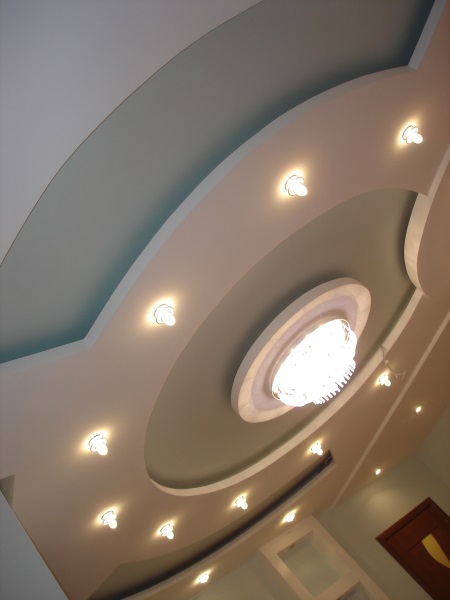
Proceed to the painting of the ceiling
In fact, the process of painting the ceiling is a simple procedure. To do this, you need to take the following:
- Brush;
- Roller (preferably made of natural fiber);
- A container for the paint material;
- A ladder or stepladder;
- Rag.
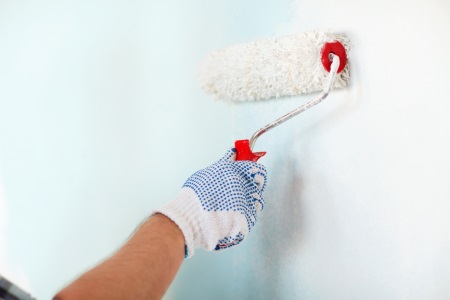
And now we propose to break down the basic principles of painting:
- The application of paint depends on its consistency. For example, the water-based type of paint should be applied in small portions and try not to leave unpainted areas.
- Acrylic, silicate or silicone paints should also be applied in small layers.
- Start painting the area near the front door using a roller. Remember that it is better to dab it well.
- In some areas of the ceiling, it is not possible to use a roller. This is where a brush comes in handy.
- After applying the first coat of paint, you need to let it dry. This may take several hours.
- After that, we apply the second and third coat in the same way. Note that if you use quality paint, you can apply it only twice.
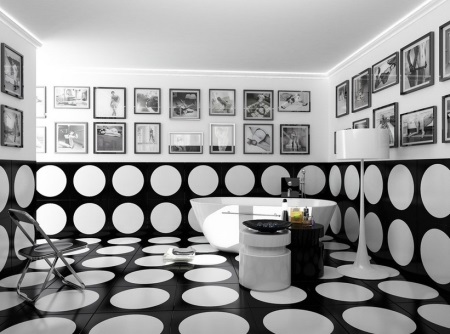
Useful tips
Immediately note that painting the ceiling should begin before finishing the walls, because the paint can splatter. This will negate the work done.
Try to distribute the paint evenly. If you do not do this, that the ceiling will leave "unpainted" dark spots that are not visible in the process of painting, but appear later.
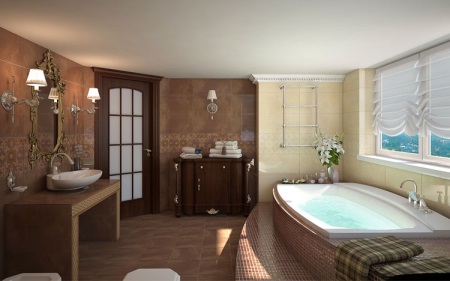
If you have purchased water-based paint, then it is better to apply it to the plasterboard. But if you preferred acrylic, it is better to smooth the surface with plaster.
If the preparatory work was carried out correctly, then painting the ceiling will not take much time. We are sure that this article will benefit you and save a lot of time.
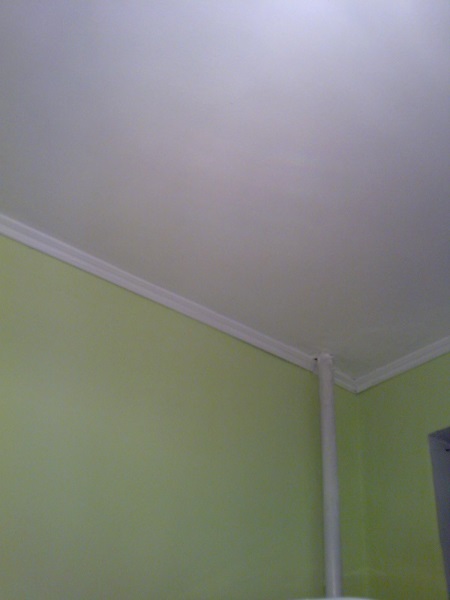
Repair is always associated with certain difficulties, but if you thoroughly study the issue before starting the work, everything will be much easier and faster.






We moved into a new house. Probably going to paint the ceiling because there's no money left at all for other options((